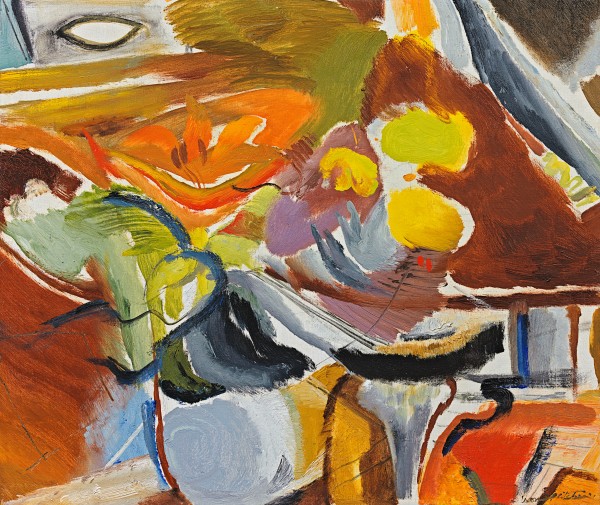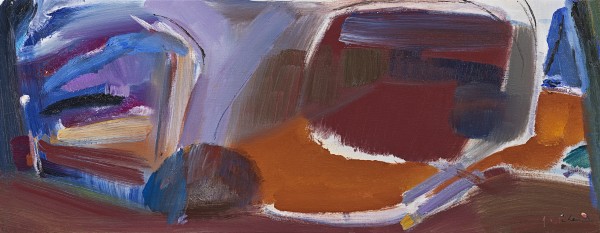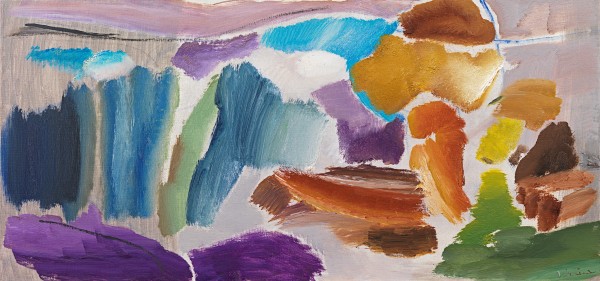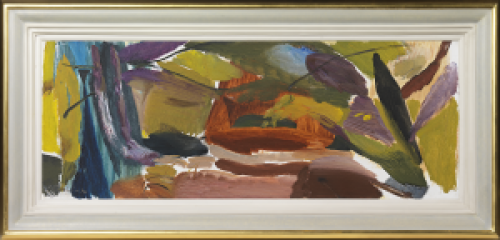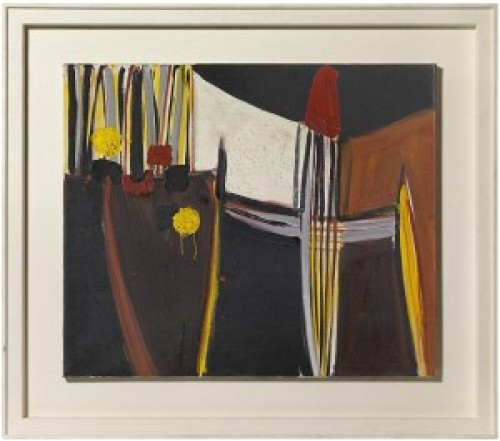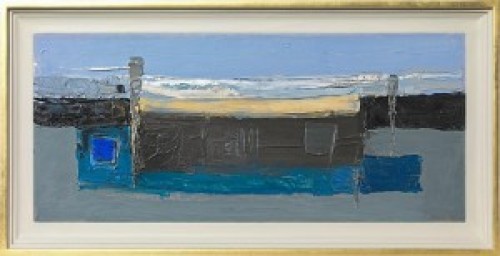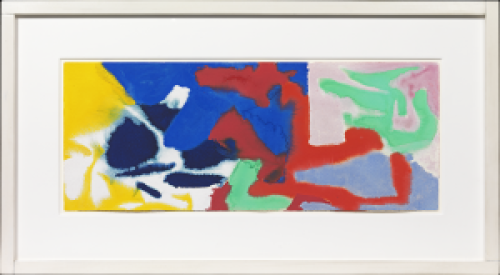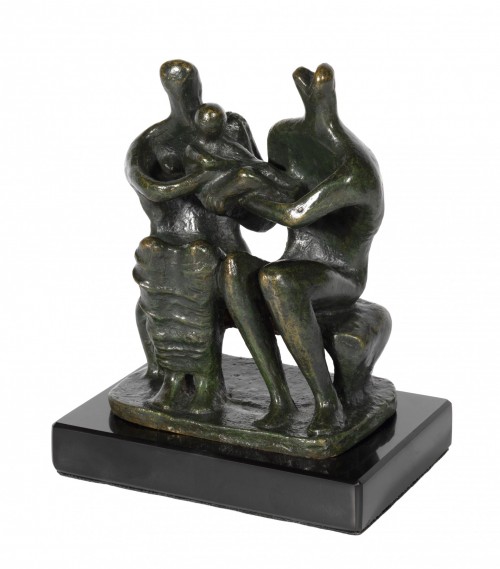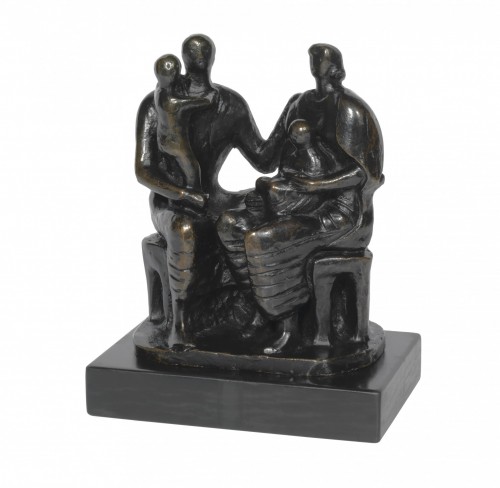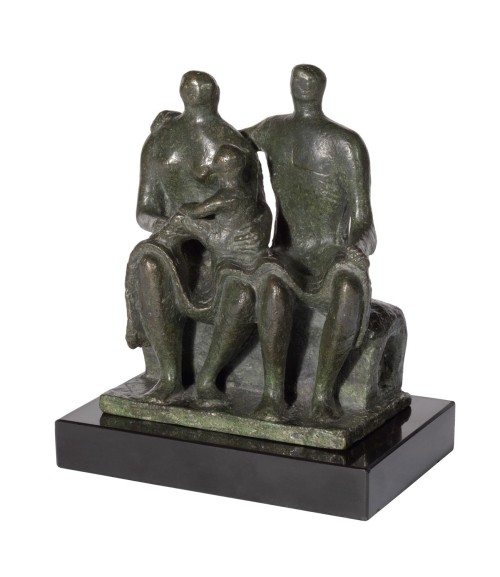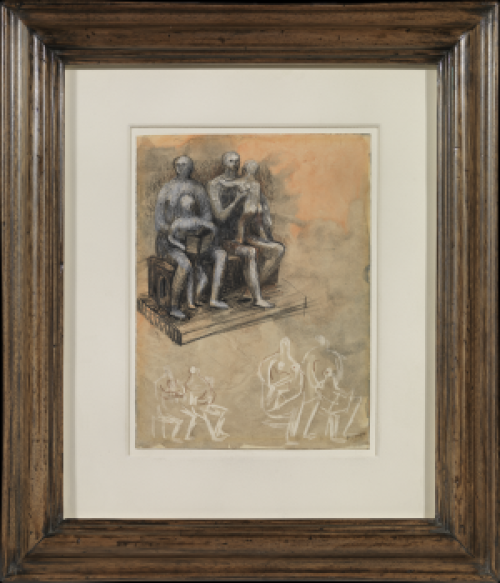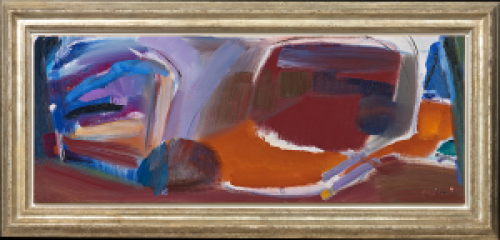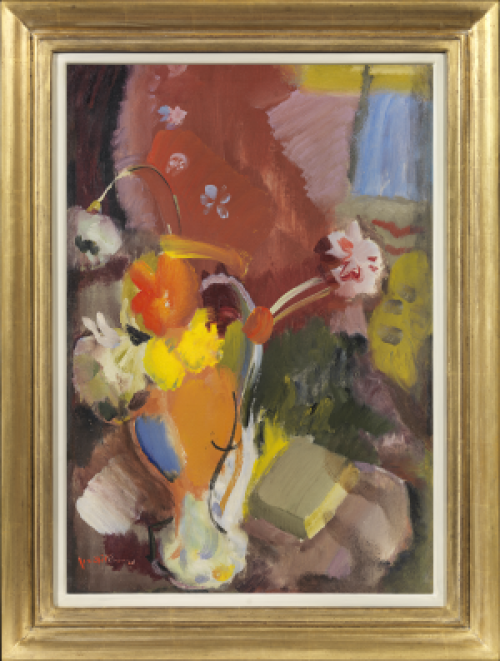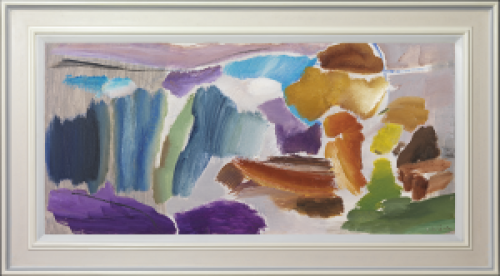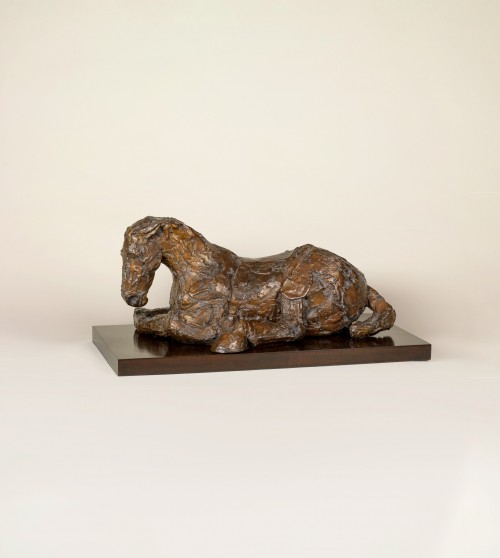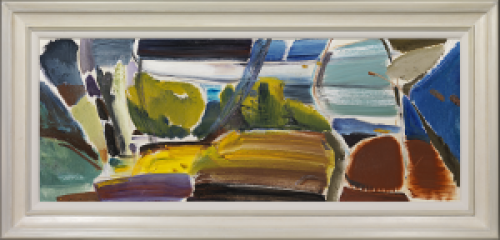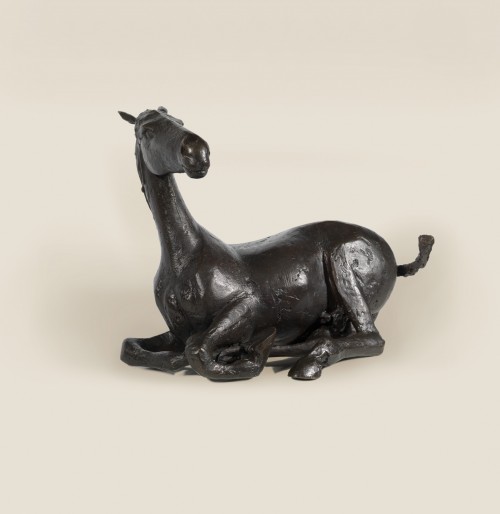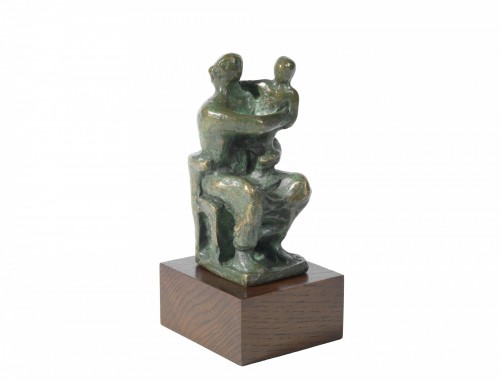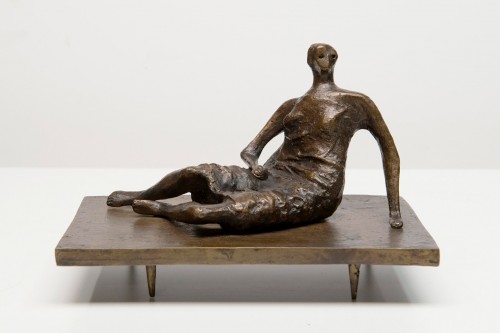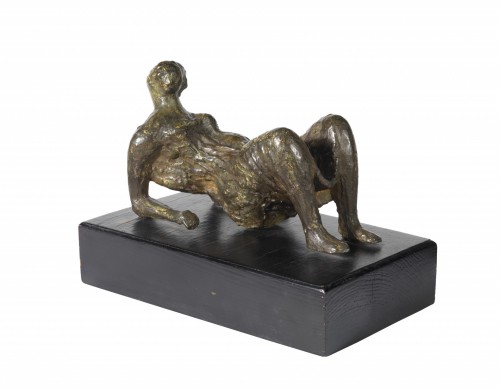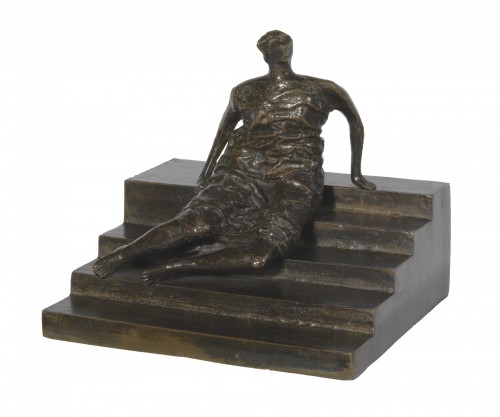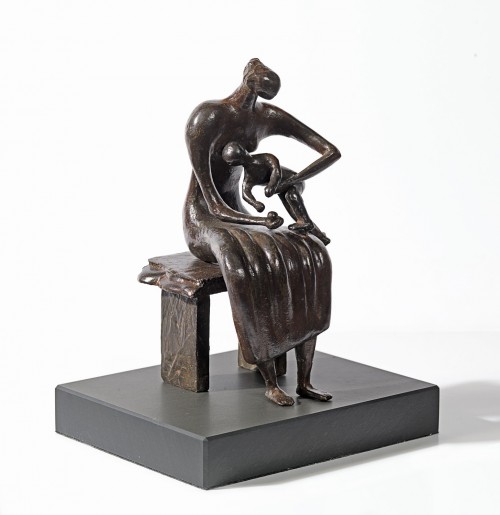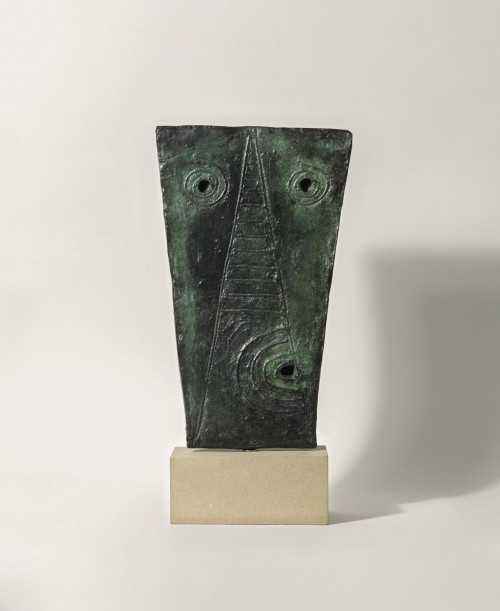IVON HITCHENS CBE
London 1893 - 1979 Petworth
Ref: CC 214
Caves of green, no.4
Signed lower right: Hitchens. Signed, dated and inscribed on the artist's label attached to the stretcher: "Caves of green, No.4 1961" / by IVON HITCHENS / Greenleaves, Petworth, Sussex
Oil on canvas: 17 x 56 in / 43.2 x 142.2 cm
Frame size: 25 x 65 in / 63.5 x 165.1 cm
In a Hitchens-style coloured and waxed frame
Provenance:
C Bernard Brown
Christie’s London, 13th May 1966, lot 140
Private collection, UK;
Richard Green, London;
private collection, Europe, acquired from the above in 2010
Exhibited:
London, Waddington Galleries, Ivon Hitchens: Summer, Water and Other Paintings, June 1962, no.22
London, Arts Council of Great Britain, Tate Gallery, Ivon Hitchens, A Retrospective Exhibition, 11th July-18th August 1963, no.141; this exhibition travelled to Bradford City Art Gallery, 31st August-22nd September 1963; and Birmingham, City Museum and Art Gallery, 28th September-20th October 1963
Literature:
Alan Bowness (ed.), Ivon Hitchens, Lund Humphries, London 1973, illus. in colour, no.54
In his solo exhibition at the Waddington Galleries in June 1962 Ivon Hitchens included a group of recent paintings each with the title Caves of green. Beginning with a sketch of the subject’s three contrasting areas of interest, he went on to develop the theme in a series of four variations. The musical analogy is obvious. The first variation, light and airy, swiftly painted with effortless ease, is gradually transformed into something more considered and structurally more ambitious in variations two and three, culminating in the complex symphony of colour which is variation number four. Here the contrasts between the three parts of the painting are heightened and their interaction more tightly knit. The architecture of the whole was clearly laid bare in the black-and-white photo of the painting (minus the distraction of colour) in the exhibition catalogue of 1962. To allow the eye free scope to roam back and forth, each time taking in a new facet of the subject, Hitchens found it necessary, with each successive variation, to widen the canvas panorama.
One may indeed feel that in this fourth version the original landscape inspiration has taken second place to the aesthetic claims of the picture space—that the caves of green foliage confronting the artist have been transfigured by him, leaving a mere suggestion of water, of branches overarching tree-lined avenues, of a clearing with just a glimpse of sky. This, however, was precisely Hitchens’ intention. Essentially, the paintings of his maturity are abstract compositions inspired by aspects of the natural world. Take, for example, the neat little pile of yellows wedged into the foreground. Does it matter whether or not they represent anything in the natural scene? They sound a note of pure joy in a joyful painting. That and no more is their justification.
It is not surprising that Hitchens should have wished to include this painting in his retrospective exhibition at the Tate in 1963 and again in the monumental volume of reproductions that represent his life’s work published by Lund Humphries in 1973 to mark his eightieth birthday. It shows, in full development, a completely original way of conveying in paint the experience of landscape.
Peter Khoroche, author of Ivon Hitchens (André Deutsch, 1990; new, revised edition by Lund Humphries, 2007, reprinted most recently in 2021).


